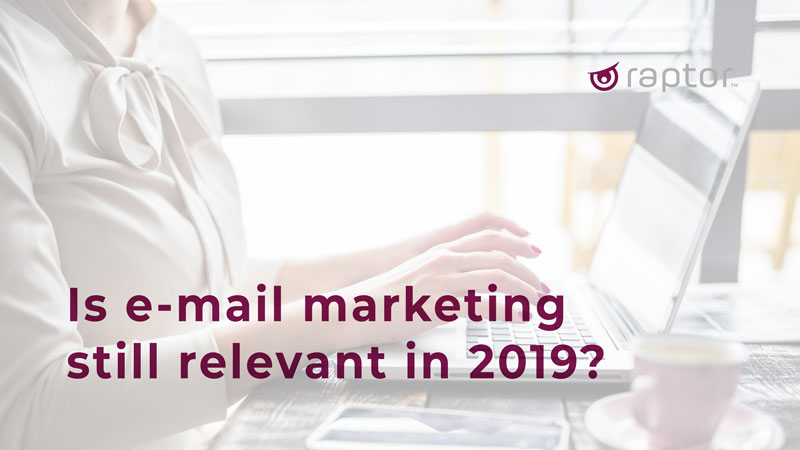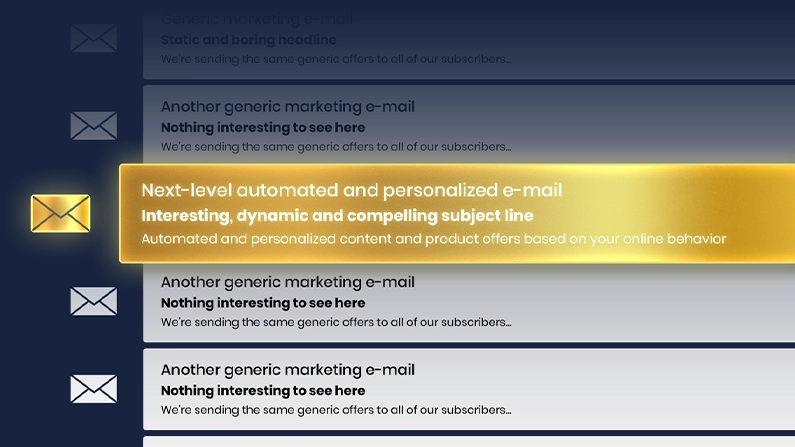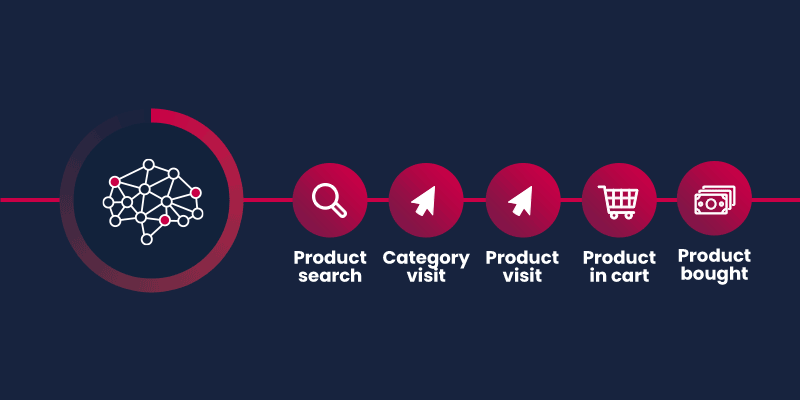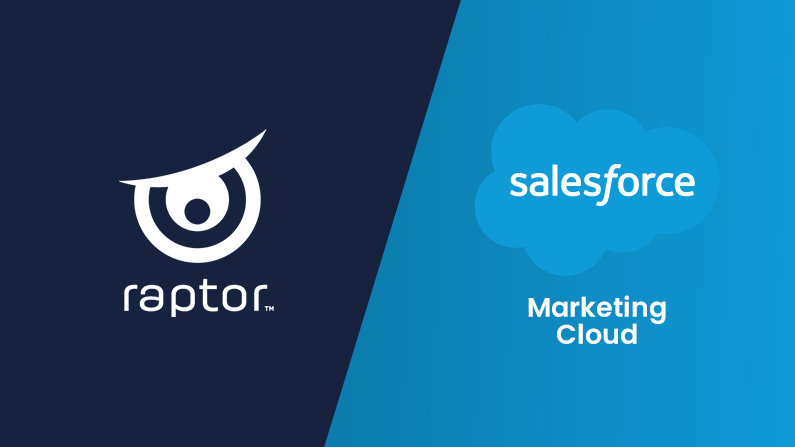Is e-mail marketing still relevant in 2019
May 10, 2019 | E-mail Triggers

E-mail marketing is still booming
Statistics show that e-mail marketing is the best channel in terms of Return on Investment (ROI). But why is the ROI that much higher in e-mail marketing, compared to many of the other marketing channels?
Here are some of the reasons why we think that e-mail marketing is still a great channel for companies to use in 2019.
Great potential for your return of investment
Tracking your e-mail marketing performance is key. If you are not tracking your e-mail performance, you have no idea if actions and implementation are working.
Compared to other marketing channels, e-mail marketing still has one of the highest ROI. In fact, numbers from 2018 show that you earn £32 for every £1 you invest in e-mail marketing, which is an increase from 2017’s €30. If you just look at ROI and compare this with Google Ads, where you on average earn £2 for every £1 you invest, there’s a huge difference.
One of the main reasons why e-mail marketing has such a high ROI is that a lot of the work with e-mail marketing has the possibility to be automated. There is no direct expense every time you send out an e-mail to your subscribers. There are not really any expenses other than the initial resources spent by setting up the templates and the automation. This can be done by setting up flows in your e-mail marketing platform, which means you create a series of emails, which are triggered. For example, when a subscriber joins your e-mail list, which means that in theory, you can plan the first 20 emails the subscribers receive if that’s what you want to do.
“Own” vs. “Rent”
You can acquire e-mail permissions in many ways, both with and without paying for it. If you acquire an e-mail permission through a signup form on your website, it is free. However, if you acquire permission through lead ads, there is some kind of expense. No matter how you got the permission, you got it for as long as the subscriber who gave you the permission, decides to stay. Compared to other channels, where you “rent” the visitor, since you must acquire the visitor again after the initial visit. With the permission gained, in theory, you can send as many e-mails as you like to your subscribers with no expense, other than they might leave after the sixth e-mail the same day.
That’s why you can talk about “owning” and “renting” visitors in digital marketing, and that’s one of the main differences between e-mail marketing and channels like Google Ads. Gaining e-mail permissions is arguably better for your long-term business since you can basically have it forever, if you are able to keep it
E-mail is a great channel to personalize your message
Like any other marketing channel, personalization has reached e-mail marketing. There are a lot of ways to personalize your e-mail marketing towards your customers, and some would say that the personalization options are way better and deeper in e-mail marketing than for example Facebook’s ads personalization options. Compared to other marketing channels, it is possible to go beyond that in e-mail marketing. In e-mail marketing, you can take it a step further and personalize your e-mail with content based on the data you have gathered about the subscriber – so if you ask for the subscribers birthday in the signup form, it is possible to send an e-mail on the subscribers birthday with a special offer. Of course, if you don’t have this data, it won’t be possible, and you need to make data enrichment campaigns to acquire it.
Likewise, you can make personalized product recommendations in your e-mails. Depending on what is possible your e-mail platform, it varies how personalized it can be or if it is just standard recommendations like “top-selling” and “most popular” you are able to present to your subscribers. If you are using a third-party system like Raptor, you are able to make relevant and personalized product recommendations.

Read more: Bon’A Parte Behavioral Triggers Case
Tracking performance is easy
Most of the e-mail platforms on the market make it easy to track how your e-mails are performing. Depending on which e-mail platform you use, you might want to collect all the KPI’s in a separate Excel folder which will give you a better overview of the overall performance and development. By tracking KPIs it is easy to watch how your e-mails are performing and how adjustments you make can have an impact on your KPI. Some of the most important KPIs in e-mail marketing is Open Rate, Click-Through-Rate, Unsubscribe Rate, Click-To-Open-Rate, and of course ROI.
Personalization in E-mail marketing
In 2019 you can’t say marketing without saying personalization, especially regarding digital marketing and, of course, it has reached e-mail marketing. The competition in a normal person’s inbox is so fierce, that if the e-mail your company sends is not relevant, the subscriber will unsubscribe in no time because it is not personalized. Today, every subscriber expects 1:1 personalization, and if your company can’t provide it, it is likely that the subscriber will subscribe to your competitor. On average a business user receives 97 e-mails a day, so if your company doesn’t stand out or the subscribers doesn’t feel like the content is relevant or personalized, it won’t get opened in the future. That’s why it is important to be relevant from the first e-mail the subscriber receives. All statistics and studies show that personalization does make a difference in performance. If you look at the results of adding the subscriber’s name in the subject line, it has a positive impact on every important KPI.
Read more: E-mail Personalization – Raptor vs. Platform
“Please enter your first name”
How many times have you not been asked that question when entering your data into a company’s signup form? One way to add personalization to your e-mails is by adding the subscriber’s name in the subject line of the e-mail and there is a reason why companies ask for it.
Two different studies tested the difference between having and not having the subscribers name in the subject line. Both groups had the subscribers name in the body of the e-mail, during the test. The first company in the test had an e-mail list with 68.000 subscribes and the second had an e-mail list with 1.111,130 subscribers. In both cases the results were clear – Both companies experienced increased open-rates, respectively 20% and 6%. Furthermore, the e-mail list with 1.111,130 subscribers increased their click-through-rate with 7%. Both companies experienced a decrease in their unsubscribe-rate even though both companies had higher open-rates than normal. The studies show that adding the subscriber’s name to the subject line has a positive impact on all the important KPIs.
Personalized product recommendations and behavioral triggers
Another way to add personalization to your e-mails is to make personalized product recommendations to your subscribers based on their behavior on your website. This can be done as mentioned by personalized product recommendations based on cookie- or userID or through action triggers such as an abandoned basket or product interest. We at Raptor have a lot of different cases where a client who has bought our E-mail Advisor and Behavioral Trigger have experienced the significant impact that personalization has in email marketing.
One of our customers, Bon’A Parte, is an excellent example of how behavioral triggers can lead to a conversion rate as high as 30%. Bon’A Parte dealt with the problem that they had a lot of abandoned baskets, around 11.000 every month to be exact. Today, nearly a fourth of all their lost basket are recovered. Furthermore, Bon’A Parte implemented the Product Interest and Category Interest triggers as well, which also helps Bon A’parte maintain a personal and engaging relationship to their users. The Product Interest trigger is creating 20% more sessions in a period of 30 days, and even though the conversion rate has decreased slightly, the revenue has increased a lot. The impact of behavioral triggers alone earns Bon A´parte €4.000 in daily revenue.
Read more: Bon’A Parte Case
Is e-mail marketing dead in 2019?
No. Definitely not.
All the above mentioned gives a clear indication that e-mail marketing still is one of the most dominant and important channels.
To summarize, the main factors why e-mail marketing is still relevant in 2019 are:
- High ROI
- No cost after acquiring permission since you “own” and not “rent”
- A great channel to personalize your message in both easy and more difficult methods
- Easy to track performance
Related Content
You might also like
Do you transform your Black Friday encounters into lasting relationships? Or do you let this annual...
Learn More
Sustainability and e-commerce. To many, they’re considered close to mutually exclusive. But they...
Learn More
If you're familiar with price drop triggers, you already know how effective they are at converting...
Learn More
If you’re a seasoned e-mail marketer, you might think you know everything you need to know about...
Learn More
Is this how you create newsletters too? If you work in e-commerce, you might recognize this routine:
Learn More
E-mail marketing is an important way to stay in touch with your customers. But it can also be a...
Learn More
Are you looking to take your e-mail marketing to the next level and increase conversion rates? Then...
Learn More
Raptor is proud to present our most advanced recommendation module to date. Find out what the new...
Learn More
The Black Friday season is upon us, and when working with e-commerce it’s essential to prepare for...
Learn More
Is your brand using Salesforce Marketing Cloud? And do you want to deliver the most relevant and...
Learn More
Let us show you what you can achieve with premium personalization


A Raptor expert can share more about the product and answer any questions you have.











